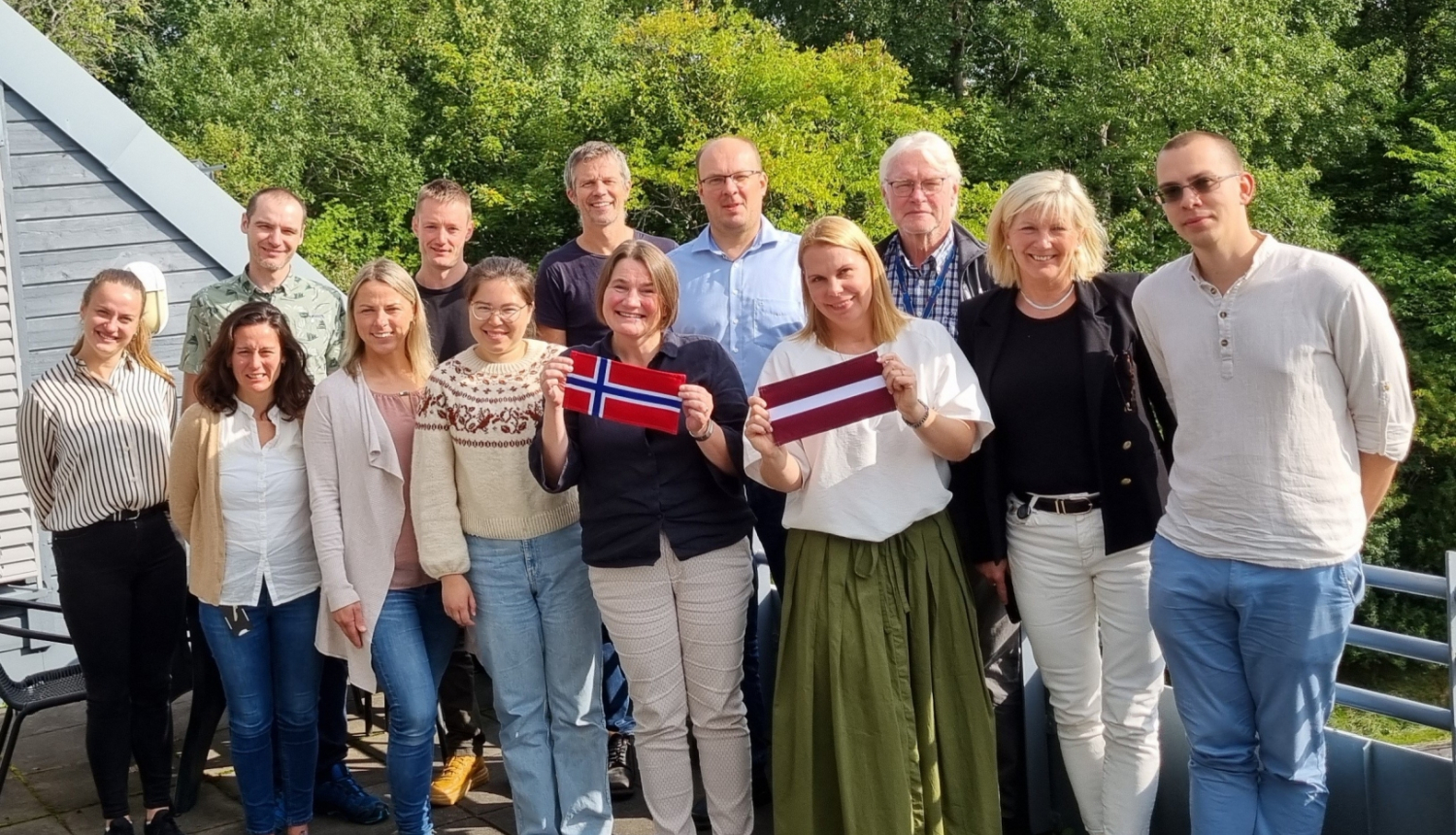From 21 to 23 August 2023, Latvian soil experts were on an experience exchange visit to the Norwegian Institute for Bioeconomy studies (NIBIO) to familiarize themselves with the Norwegian experience in soil mapping, the Norwegian soil information system, soil data and their use in thematic maps.
“The visit was very intense and successful,” says Lauris Leitāns, head of the project “Enhancement of sustainable soil resource management in agriculture” (E2SOILAGRI). “During these three days, we took note of Norwegian experience in soil mapping - from fieldwork to entering the results obtained into the Norwegian soil information system. We had a particular interest in the soil information system itself: its design, data structure, maintenance and the creation of thematic maps. Norwegian colleagues were responsive and allowed us to explore their soil database in depth. We are particularly grateful for this opportunity to NIBIO because the information collected in Norway will be very useful to us in establishing and integrating our agricultural soils and related registers.”
The Norwegian soil information system is based on soil mapping, consisting of two important and parallel processes. In the first process, the soil is described using nine criteria: soil surface organic matter content, rockiness, etc. According to the established description, the soil assigned its soil type. In the second process, the soil is divided into so-called testing grounds with the same characteristics, which can be characterized by the same soil type. These testing grounds, along with the soil type, are further used to make different thematic maps. The easiest of these are a soil type map and a soil grading map. The most complex maps use modelling and, in some cases, meteorological and terrain data such as the land value map, erosion map, soil suitability for wheat cultivation, etc. All thematic maps of Norway's agricultural soil are not only publicly available but also mandatory. If the site has been mapped and all thematic maps have been prepared for it, then they should be taken into account.
Latvian soil research experts, on the other hand, shared their experience of soil carbon monitoring and agrochemical research, soil fertility assessment and cooperation with private agrochemical service providers. The meeting of experts from the Ministry of Agriculture (MoA) and the Norwegian Ministry of Agriculture and Food was valuable, during which the current developments in European Union legislation regarding soil protection and monitoring of soil processes has been discussed.
Experts from MoA, the State Plant Protection Service (SPPS) and the Rural Support Service (RFS) participated in the Norwegian Financial Mechanism 2014-2021 Fund for Bilateral Relations “Exchange of experience with the Norwegian Institute for Bioeconomy Studies on soil data processing in Norway”. The initiative is implemented with the support of the bilateral Cooperation Fund of the Program on Climate Change Mitigation, Adaptation to and the Environment of the Norwegian Financial Instrument 2014-2021 and is fully funded by the Kingdom of Norway.
Working together for a green Europe!
Photo: Marianne Skolmo



